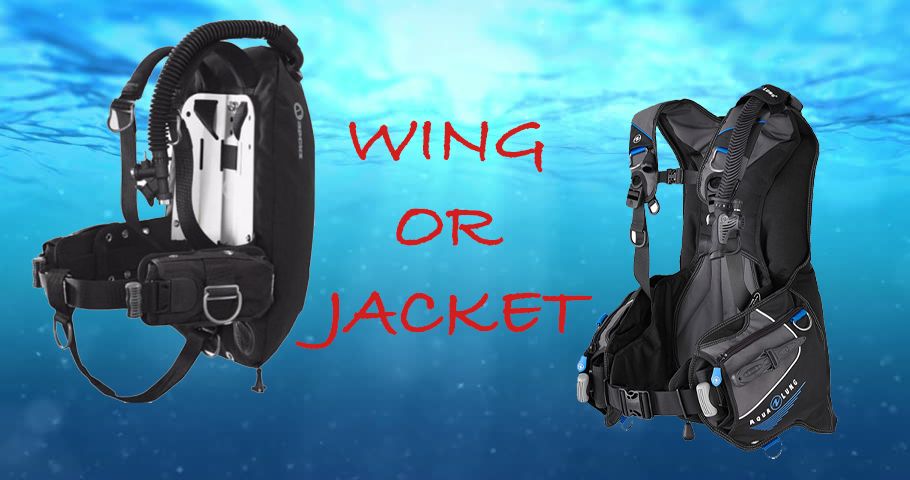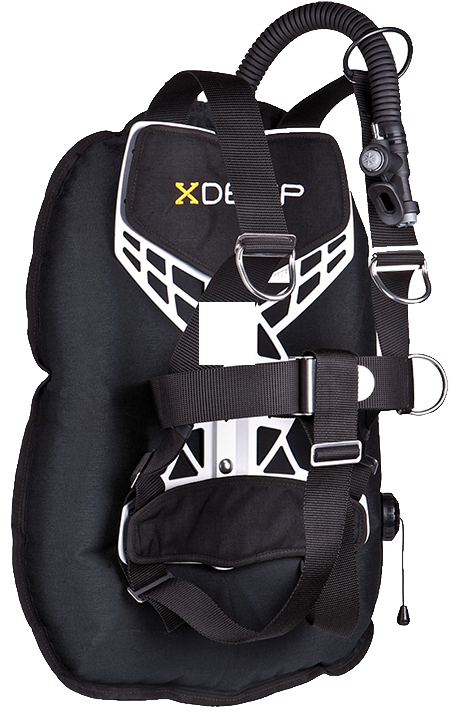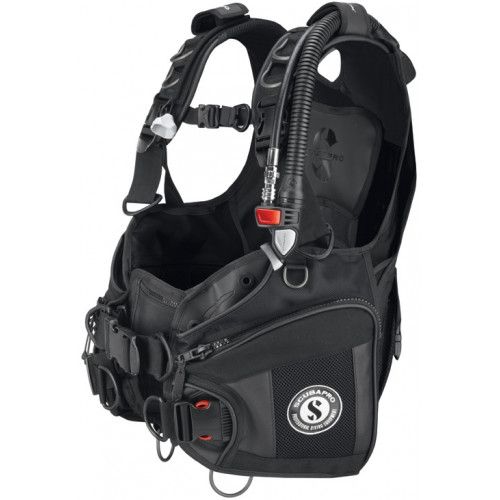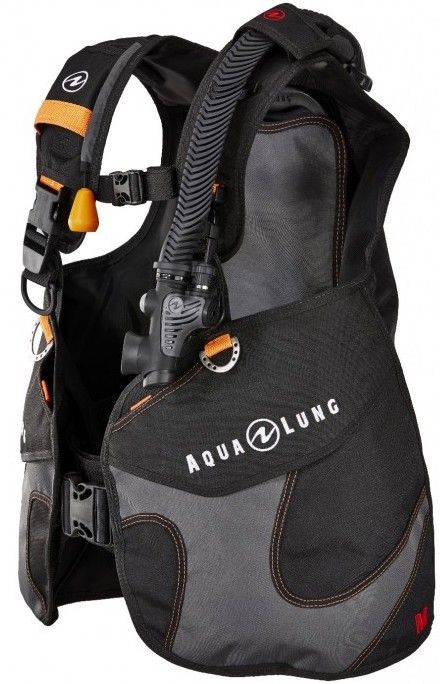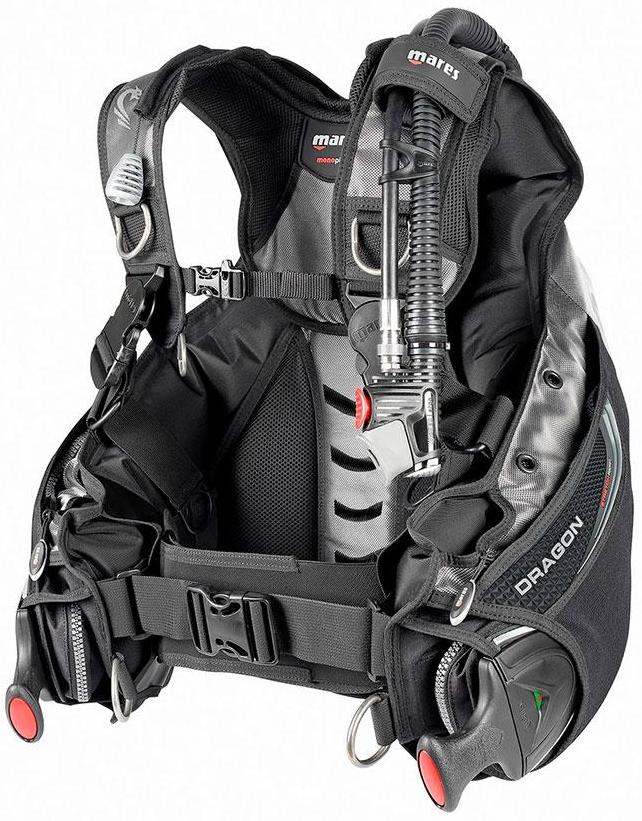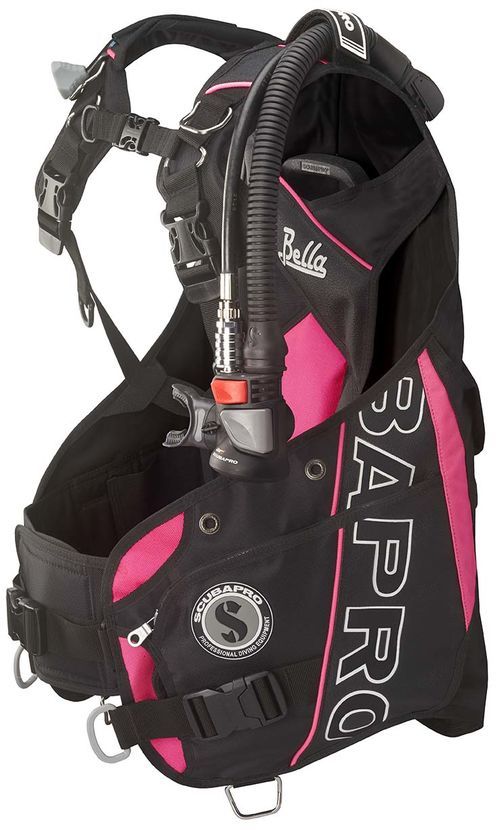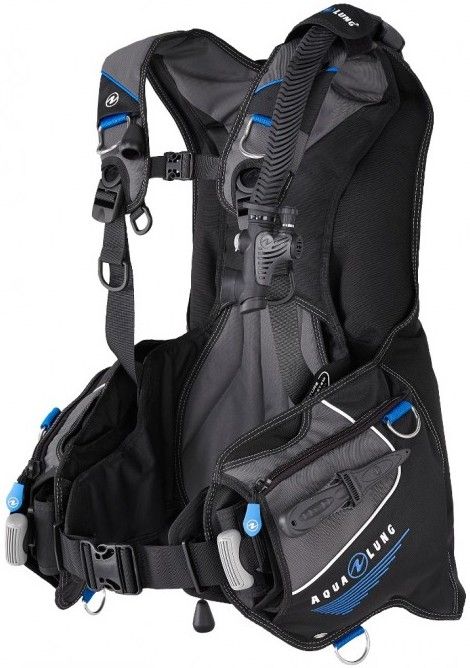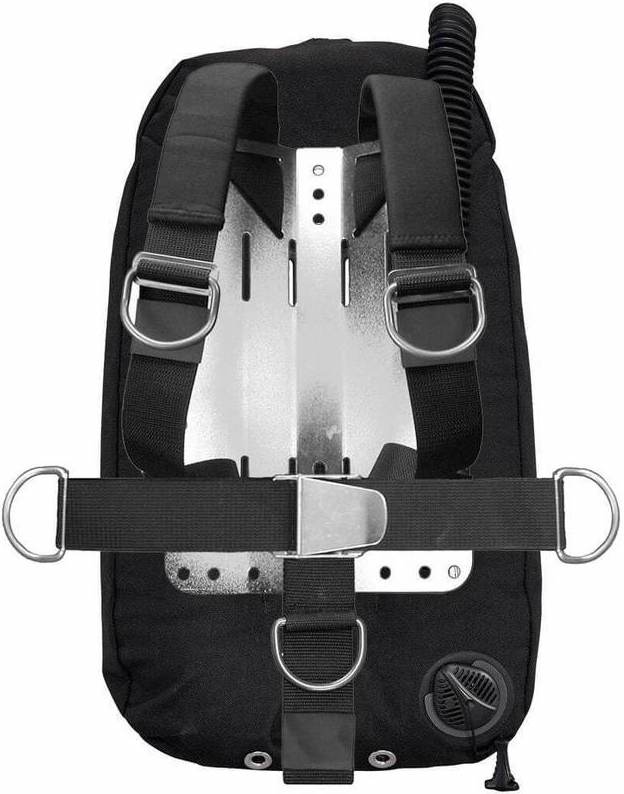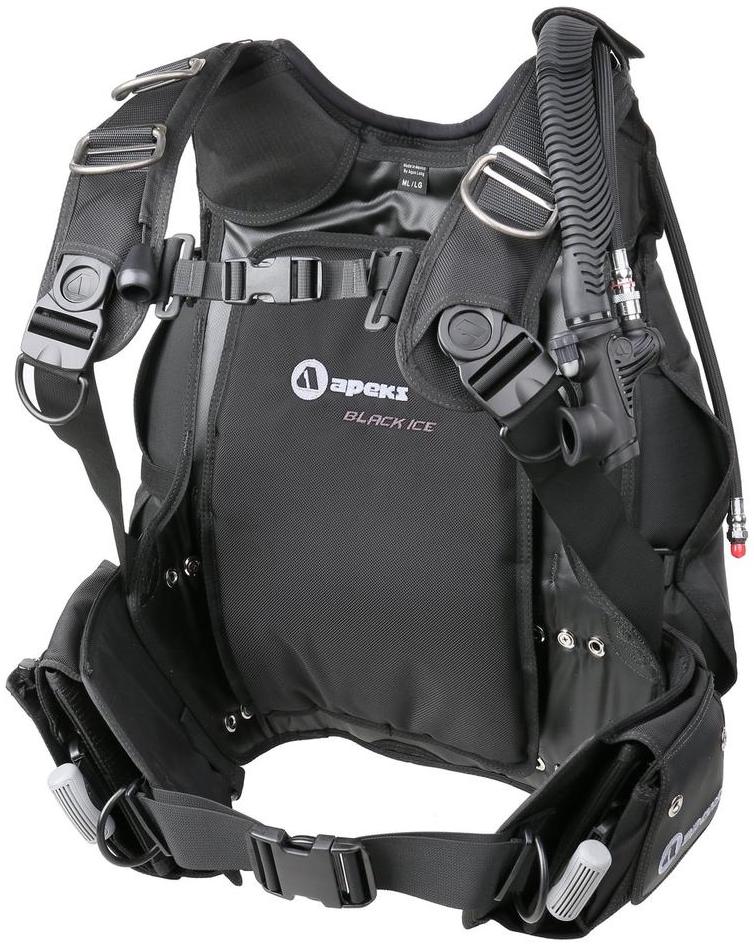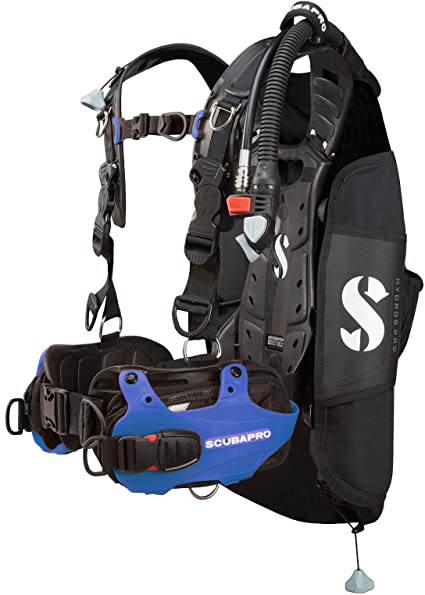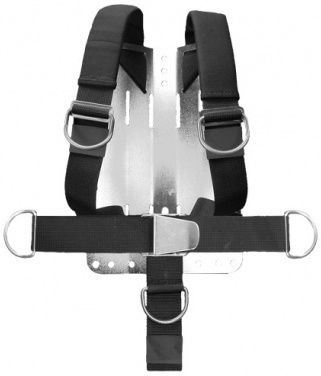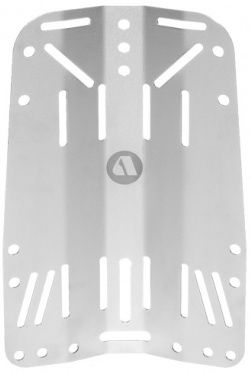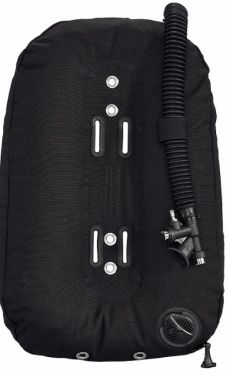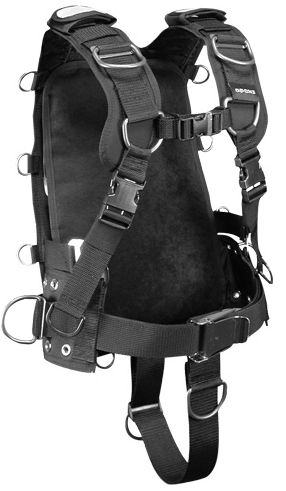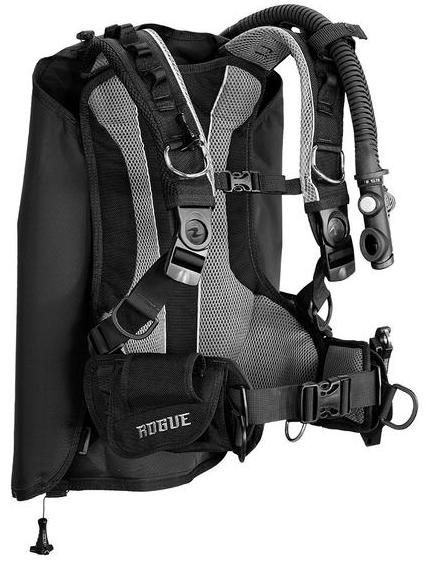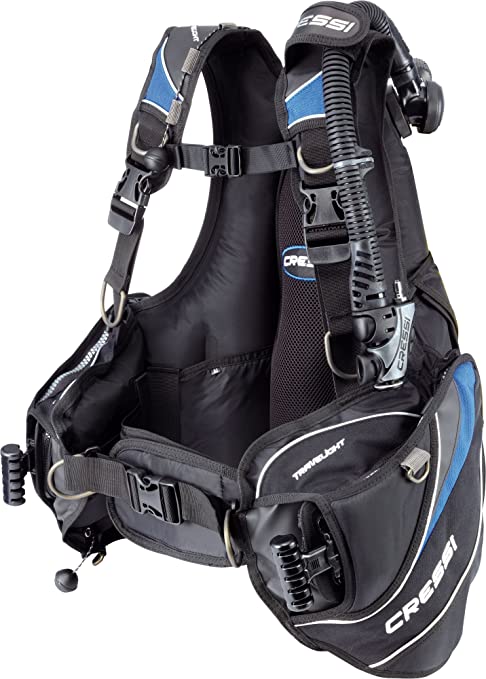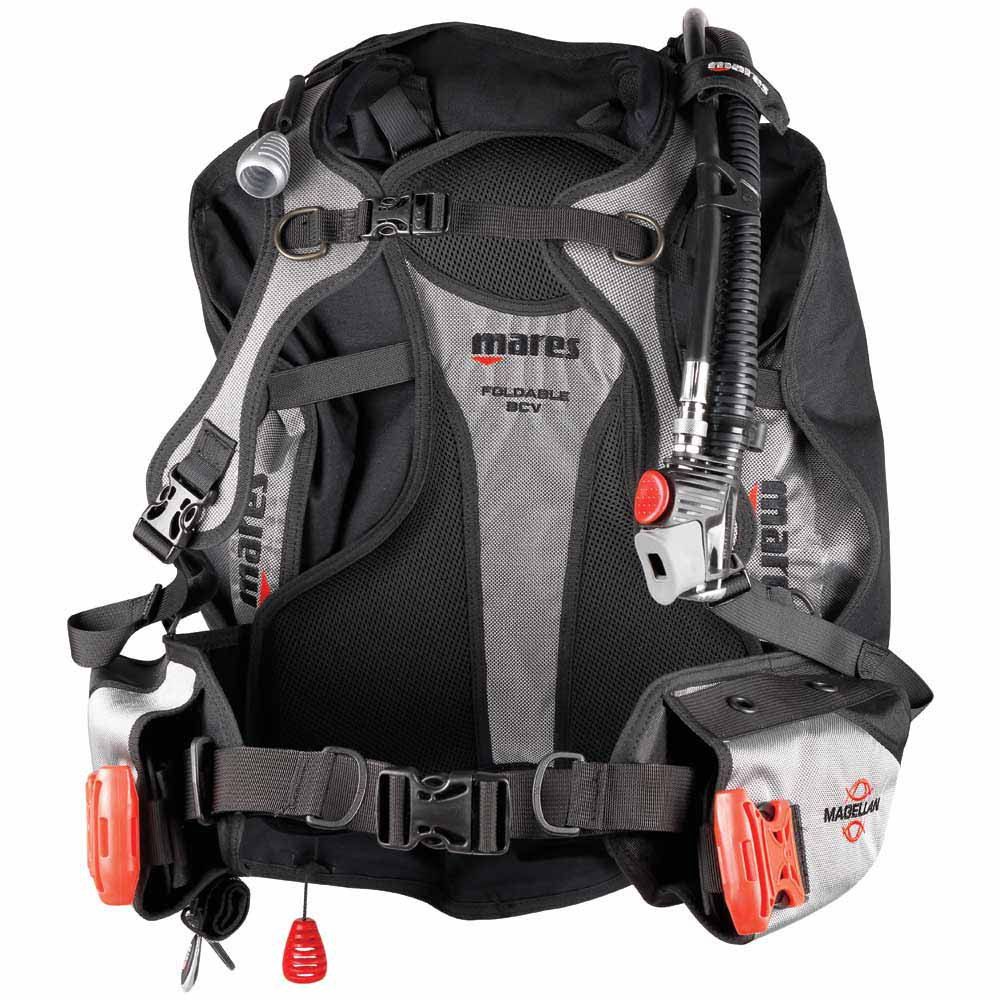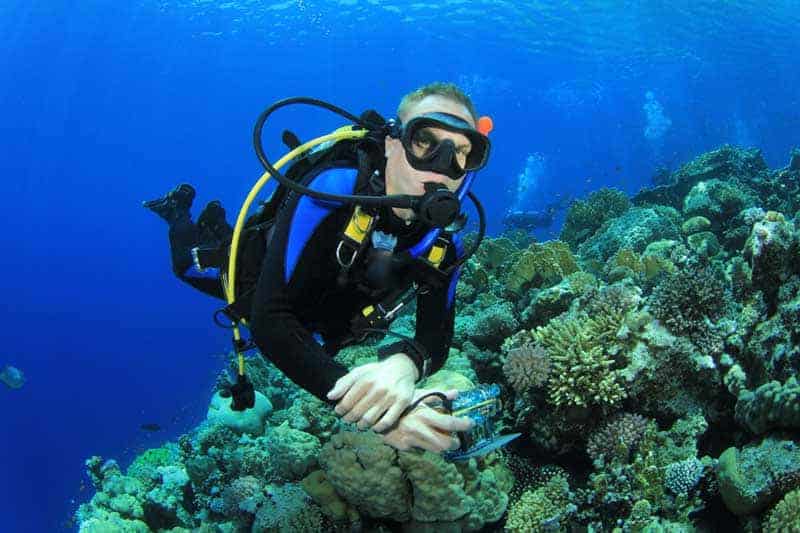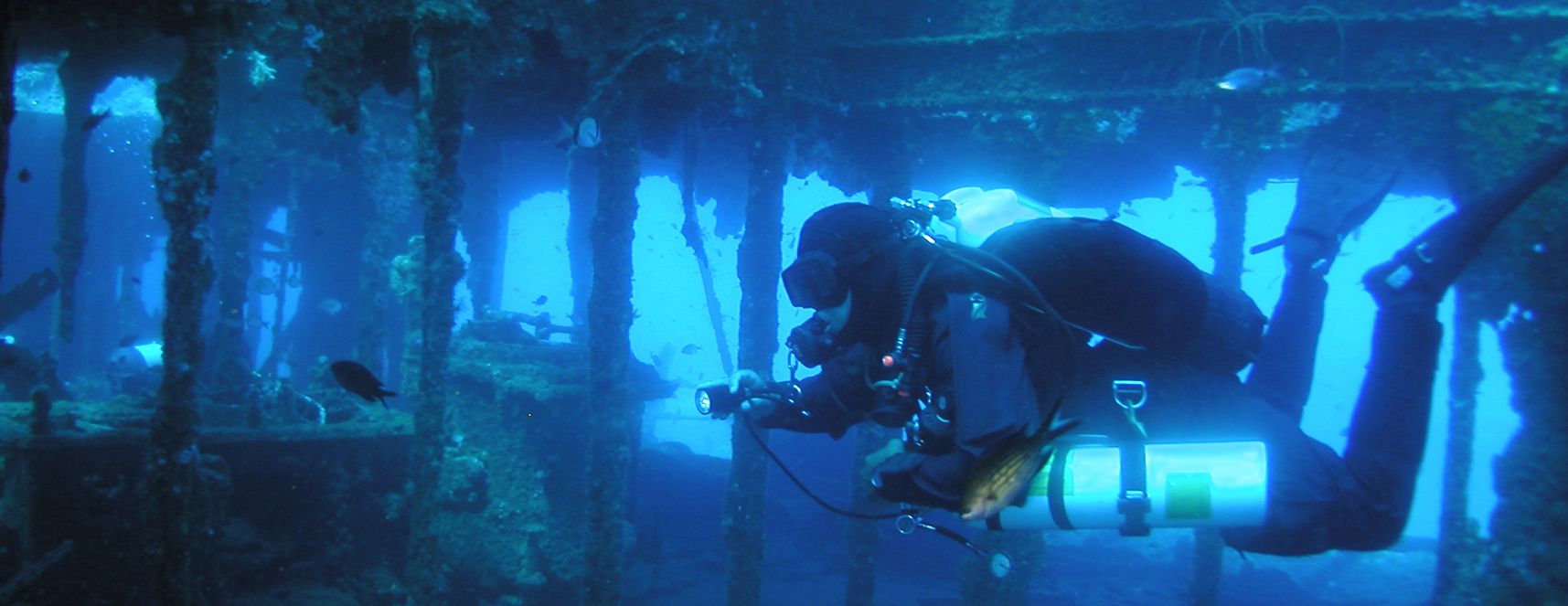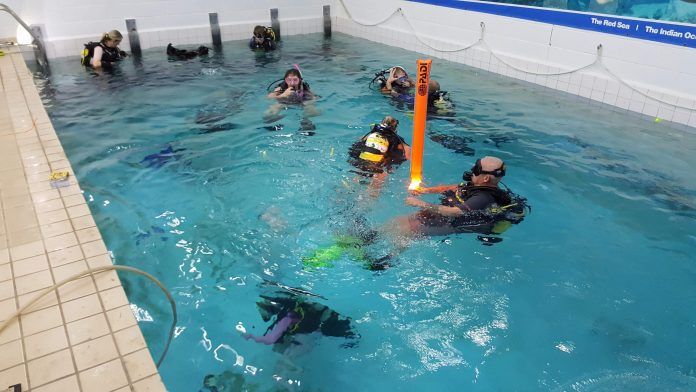WING OR JACKET STYLE B.C.D?
So, the big question which seems to be getting asked more and more often now is do I buy a jacket style or wing BCD?
Jacket style BCD’s have a wraparound style air cell which wraps around your sides, up your back to your shoulders, whereas the wing style BCD has the all the air contained in a cell on your back. The jacket style has, for a long time been the industry standard for recreational divers worldwide with single tanks. Whereas the wing style was more suited to the Technical divers diving with multiple tanks doing deeper dives. However now that the 2 forms of diving are becoming more accessible and people are finding it easier to access the training required to become “technical” divers, wing systems are slowly starting to make their way into the recreational world too.
For most people starting out in the world of scuba their first experience will be the Jacket style BCD as this is the BCD of choice for most schools worldwide. Generally speaking, when people take the plunge for the first time into SCUBA, they are already overloaded by the sensation of being in a foreign environment, covered in strange equipment and being asked to perform horrible skills like flooding a perfectly good mask. For this reason, the jacket style is a great option, as when inflated it holds the diver tight and in a comfortable upright position allowing the diver to feel secure while they relax and come to terms with what’s just happened to them. The main down side to the wing for new divers is as you add more air to it and it rises out of the water, it will naturally push you forward, which for a new diver can be quite disconcerting, especially when you throw salt water into the equation out in the ocean. So, for this reason the majority of open water courses are taught in Jacket style BCD’s to help students relax more in the water.
Jacket style BCD’s will generally have more storage options than their wing counterparts. Most BCD’s will have at least a couple of D-rings (some will have a lot more) located somewhere around the shoulders or hips to allow easy clipping off of cameras, torches etc. They will also generally have one or two good size storage pockets located on your hips to allow the storage of DSMB’s, finger reels, slates etc. Where as your Wing BCD will generally have a fairly basic harness system which will probably have a lot more D-rings for clipping off equipment to but for pocket storage you usually have to resort to using separate pockets on shorts like the Apeks Tech Shorts or pockets built into your drysuit. The main disadvantage to the pockets on the jackets is when the jacket is fully inflated it will greatly impede the removal or stowage of anything in the pockets. However, as most of the stuff your carrying will be used underwater like DSMB’s and reels etc, this shouldn’t really be an issue unless your massively over weighted and dive with your jacket half inflated all the time.
Another advantage to jacket style BCD’s is integrated weight systems. You can buy these as optional extras on wing systems but you don’t find many jackets style BCD’s that don’t come with them as standard. The advantage of integrated weights is the load of the lead you carry is spread through your jacket so it is spread evenly over your whole back and shoulders. Compared to a standard weight belt which can dig uncomfortably into your hips and put unnecessary stress on your back. If you suffer from a bad back this system will make a world of difference to you. Again, you can add these to a harness system but usually at quite a considerable extra cost.
The first main advantage to wings is the position of the air-cell on your back. Having the air on your back in a wing means you are held in a nice horizontal dive position. Most wings are donut shaped nowadays, which allows the air to move freely around inside the wing and prevent air getting trapped in one side or the other. This means in the horizontal position the wing will wrap up around your cylinder holding you nice and level in the water. With jacket style systems having the wrap around air cell, any air you add during the dive to adjust your buoyancy tends to naturally rise to your shoulders and hold you in a slight leg down position in the water. Basically, the more horizontal you are in the water the easier it is to streamline yourself which helps reduce your overall drag in the water and reduce snagging hazards in confined spaces.
Another advantage to the wing is the minimalistic harness’s they use compared to the big bulky wrap around air cells and pockets on the Jacket style BCD’s. As mentioned before this does mean you don’t have any pockets but the freedom of movement this gives you is great and particularly good if you are a photographer or videographer as you can move your camera systems around with a lot more freedom. Losing the big bulky air-cell and pockets also greatly increases your ability to streamline yourself in the water. This is particularly good for wreck and cave divers who like to squeeze through tight openings and explore their surroundings as it gives them a much lower profile in the water.
Wings come in two forms, modular systems and complete systems like a Jacket style. The complete systems are great for the recreational diver as the harness’s generally come with all the comfort of a jacket style, like padded backplate and comfortable padding throughout the back and shoulders. They often have integrated weight systems included yet they are still nice and streamlined compared to a jacket style BCD. They would be ideal for a recreational diver who enjoys photography as they get all the comfort in the harness system but still get the freedom of movement when trying to get that perfect shot. Some models will be adaptable to accept twin cylinders but if you see your diving moving down the twinset route you are better off with a modular system as it gives you a lot more freedom in setup. The modular systems are exactly that, they are made up of 3 main modules; Harness, backplate and wing. Whereas the complete systems come complete like the jacket style systems so everything is permanently attached together.
The advantage to the modular system is you can modify it to suit several different setups. For single tank diving you can fit a smaller wing and tank bands to the system and off you go. However, if your diving expands into twinsets, you can use the same backplate and harness combined with a larger wing. This obviously saves you a lot of money and extra kit but also means once you have your harness set up how you like it you never have to adjust anything other than the size of wing you need. The modular systems allow you a lot more freedom in where things like D-rings etc are located and you can add as many as you like. This means you can set and adjust everything to suit your diving style. With the modular system you not only get a choice in wing size but backplates and harness’s too.
Harness’s generally come in 2 forms from suppliers. The basic harness system which is basically 2” webbing which you thread through your backplate in a specific order to form the waist band and shoulder straps. These are incredibly strong systems allowing you to carry multiple tanks and weight with ease and give you total freedom on D-ring positioning and accessories. The second type of harness is what suppliers generally refer to as their deluxe harness. Basic harness systems are strong but their basic nature can make them a bit uncomfortable especially if your diving in warmer waters with thin wetsuits or rashguards. This is where the deluxe harness’s come in as they generally have a lot more padding on the back and shoulders making them more comfortable to wear and will generally come with quick release buckles on the shoulder to make removal a lot easier. These shoulder releases can also come in handy with divers diving in bulky drysuits especially if they have ring systems attached as it means removing your harness is a lot simpler. This can be a point of debate with divers as some claim it adds a weak point to the harness but after you watch a diver with rings fitted to their drysuit try to wriggle out of a harness you may think the ease of removal is a nice option to have.
Backplates generally come in either aluminium or stainless steel and some companies offer lightweight travel options too. There are several advantages to the materials. For divers who don’t require too much weight then aluminium backplate gives you the strength to deal with twin cylinders without adding excessive amount of weight to your setup and also helps reduce weight for travelling. Then for divers who require more weight they can choose between 3 or 6mm stainless steel backplates. This will help reduce some of the lead weight on their weight belts and distribute the weight evenly over their back rather than having a lot of weight around their waist, offsetting their body position in the water. Finally, there are the lightweight backplate’s designed for the travelling single tank diver which help reduce your overall weight in your already shrinking luggage allowance. This basically means the modular system will cover you whether your diving single tanks or twins or jumping on a plane to go visit nemo and cost a lot less than separate systems for each.
This brings us nicely onto the next point, the travelling diver. Over the years, luggage allowance is gradually getting less and less and the more weight savings we can make on dive kit the more duty free we can squeeze in on the way back. The only real way to reduce the weight on a Jacket style BCD is to strip features or use a lighter weight material. However, with a wing system you’ve already removed a huge chunk of the weight by removing the wrap around air-cell and pockets so in general wings systems are lighter but then if you combine this with lighter weight material too, you get some of the lightest weight systems out there. Some of the models coming in at just over 2kg which is a huge weight saving compared to some of their heavier counterparts. This does have its downsides though and, in this case, you lose durability. If you’re purely a warm water diver and only dive abroad 2 or 3 times a year this isn’t really a huge issue as they should give you years of service before they wear out. However, if you’re a regular UK diver and are in the water with every possible opportunity then you would be better off having a more rugged, heavy Duty BCD as your main system, then a travel style BCD purely for when you go on holiday to save you weight.
The main downside to the wing system is on the surface and its ability to put you in a facedown position. This is basically due to the fact that as you add more air to the wing it starts to rise out of the water. As you rise out of the water with the bulk of your weight on the front, you tend to fall forward the higher the wing protrudes from the water. There is no denying this happens but it is very easy to avoid by not over inflating your wing. Most divers when they first start out tend to inflate their BCD's until all the valves are blowing off and they are bobbing around in a nice upright position on the surface. With the wing system on you simply need to refrain from fully inflating and add just enough air to your wing so your head and neck are just out of the water. Combine this with lifting your knees up slightly in front of your body and leaning back into the wing you will find your wing system comfortably holds you on the surface without forcing you into that face down position. As with everything this comes with experience and is one less thing new divers have to think about when they get to the surface after their first open water dive when being taught in a jacket style BCD over a wing BCD.
Basically, when you come to buy your first BCD, as we recommend you do with your regulators ask yourself where you see your diving in 5 years’ time. If your main goal in diving is to explore the oceans of the world, experiencing as much marine life as possible then in all honesty either Jacket or Wing systems will be fine for you. What we recommend you do is try both systems out and simply choose the system you feel most comfortable with. You will find in diving as with a lot of other things in life there is a lot of peer pressure to do this or that. Diving is all about finding the right equipment and techniques to suit your style of diving, not because some big shot loudmouth on the dive boat says you have to. At the end of the day the more comfortable you are in the water, the more relaxed you are, helping turn you into a better all-round diver. We offer try before you buy in our onsite pool, so if you’ve never tried a wing system out before you can try one out and see how you find it compared to your classic jacket style BCD.
If you enjoy your history and your main goal in diving is to explore wrecks with the odd reef dive thrown in, then we would recommend you look at wing systems. The ability to streamline your kit and profile in the water means wing systems are the ideal choice for wreck diving. In particular the modular systems as this will allow you to adapt your setup as your diving skills advance. Basically, the best wrecks tend to be deeper, which means you will be spending more money on courses in the future, so the less money you have to spend on upgrading your kit the better. By going down the modular route you can easily modify your setup to twinsets etc. rather than buy a completely new setup if you bought a jacket style BCD to start with.
Just remember which ever system you decide to buy, make sure you try it out for the first time in a pool. This will allow you to make the initial adjustments and familiarise yourself with the system before you head out into the Great outdoors. Again, you are more than welcome to join us on our Tuesday pool nights to test out new equipment or book a time that suits you during the day to come in and test out new equipment.















